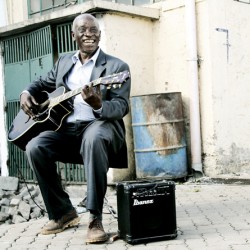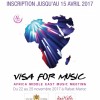Shades of Benga Online – Episode 2: The Congo Connection & Nairobi Social Halls
We’re back again this Wednesday 23 September @ 8:00PM EAT (+3GMT) with #shadesofbenga online episode 2. We travel back in time and see how a couple of Congolese guitarists influenced Kenyan popular music in the 1950s. Join us on our YouTube channel KETEBULMUSIC and Facebook page ketebulmusic to watch this episode. CLICK HERE to schedule and to view the episode.
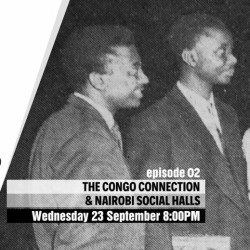
Tabu Osusa: The Making of an International Music Champion
By Isaac Otidi Amuke
Osusa and I are sitting at La Belle Époque, the ground floor café at Nairobi’s Alliance Francaise on Monrovia Street. Soon, our conversation becomes untenable when music from Straight Line Connection, a Nairobi indie rock/metal band gets too loud. Osusa, an avid French speaker and board member at Nairobi’s Alliance Francaise, informs me that the performance is part of ShowCase Wednesday, a monthly shindig where artists experiment with an eye on building audiences. That’s how Osusa and I, once again, make for the relatively quieter Sippers pub in Hurlingham, a hideaway we both frequent to listen to Congolese Rhumba, a musical shrine of sorts which Osusa has since christened The Church.
READ THE FULL INTERVIEW HERE: https://thelagosreview.ng/tabu-osusa-the-making-of-an-international-music-champion-isaac-otidi-amuke/
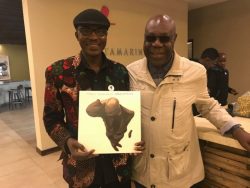
COVID-19 funding for artists/activists
The Centre for Applied Human Rights (CAHR) at the University of York’s, through a grant from Open Society Foundations, invites artists and activists to apply for COVID-19 funding of up to $3,750.
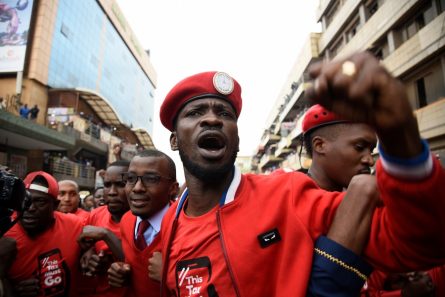
Ugandan music activist Bobi Wine.
The funding intends to support artists and activists in responding to the COVID-19 outbreak and its implications for human rights defenders.
Expected Outputs
Activists could write a diary, make a weekly podcast, write a blog, etc.
Artists could work in their chosen media to respond to the activist’s contribution and/or to wider developments in their country/region. The CAHR is open to innovative suggestions on the nature of the collaboration between activists and artists.
- The document, monitor and analyse events in real-time.
- Reflect on well-being, both your own and that of your communities/organisations.
- Go beyond a reactive response to imagine new, alternative futures. This future-oriented work could assess how crises and disruption open up new possibilities for creativity and innovation, as well as for regressive and repressive measures, and/or build on positive responses to the virus itself (local and global forms of solidarity).
Project Proposals
Activists and artists should apply by presenting a single collaborative project proposal that does not exceed two pages in length and includes the following:
- A brief profile/bio of the artist(s) and activist(s) involved.
- A brief description of the project/programme of work, highlighting in particular how it responds to the COVID-19 emergency and its links to activism and civic/political space; which of the three objectives set out above it responds to; any safety, security and ethical concerns, and how these will be addressed. Whether it builds on existing initiatives or is a new collaboration, and through which media/methodologies it will be carried out.
- The main beneficiaries and audiences of the project/programme of work and why the methodology/medium is appropriate for the local context.
- Details of additional sources of funding or contributions.
- The envisioned output(s) of the project/programme of work, for both the activist(s) and artist(s).
- The amount of funding you are applying for, and a brief justification for the specific amount requested. This is to be in the form of a basic budget and justification of resources (subsistence/salary costs can be included). Most of the grants will be between £1 000 and £2 000. Additional justification will be required for larger awards, up to £3 000 if the application involves groups of activists and/or artists.
- One appendix featuring examples of artistic work can be included in the application. The appendix can be added to the two-page application.
While applications need to be in English, activist and artist outputs that are in part or completely in local languages are welcome.
Criteria for Assessment
- A clear description of the link between COVID-19, and responses to the virus, on the one hand. As well as threats to activism and civic/political space on the other, affecting either the artists/activists making the application and/or their country.
- Evidence of a strong working relationship between the artist(s) and activist(s).
- Feasibility and relevance of the project is challenging and difficult circumstances (including consideration of safety, security and ethics).
- Evidence of innovation and creativity.
Timeline
Artists and activists will have to provide a timeline for outputs in their application, between now and 31 December 2020. Artists and activists will also need to submit a short joint report (two pages). This will detail the activities undertaken as well as all expenses incurred, by 31 January 2021.
All inquiries and submissions will go to Piergiuseppe Parisi piergiuseppe.parisi@york.ac.uk and Pippa Cooper at pippa.cooper@york.ac.uk(link sends e-mail).
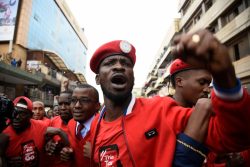
Ketebul Music: Statement on CNN’s Inside Africa program
During the first week of January 2019, the Inside Africa program by CNN featured two Kenyan musicians: Olith Ratego and Ogoya Nengo. Although the program was captivating, it fell far short of the mark of excellence required for journalistic research.
According to the program, the two artistes were discovered in their respective villages and their genres of music (Dodo and Ohangla) introduced to the world for the first time by Kenyan DJ Suraj and South African producer Emile Hoogenhout.
The facts in the program were blatantly incorrect, as both artistes have been recording and are contracted to Ketebul Music since 2004; hence they are not the village- trapped musicians they were purported to be. Olith and Ogoya are among the most traveled artistes in Kenya through musical tours arranged by Ketebul Music, Jojo Records and Planet Rock (Berlin, Germany).
The year 2005 saw Ogoya initial international exposure when she was introduced by Ketebul Music to Opiyo Okach, a Kenyan mime dancer based in Montpellier (France). The two paired up that same year and extensively toured continental Europe, South Africa and Brazil.
Furthermore, viewers of the program were made to believe that the two musicians were being introduced to electronic music for the first time by the two DJs. That impression was false since both Olith and Ogoya have previously recorded experimental electro-dance music with Ketebul Music back in 2004, under music producer Gabriel Omondi.
It is therefore imperative that Suraj and Emile should conduct due diligence as to who the holders of the copyright are, before sampling their musical works. Ogoya and Olith have also worked with German musicians Stefan Schneider and Sven Kacirek on a project titled; The Kenya Sessions, released on Pingipung label on 7 July 2011.
This musical endeavor featured in The New York Times edition of 22 March 2011 on the subject: Next generation of partnerships between Western labels and African artists.
Presently, Olith and Sven are working on an electronic album, Odd Okoddo, to be released later this year; not to mention his recording with No-Nation, an independent record label based in the UK.
In 2009, ‘Matatu’ by Ogoya, produced by Ketebul Music was featured on the French label Marabi Africa vol. 2, and another of her songs ‘S.M. Otieno’ was part of a compilation put together by the Norwegian label Kirkelig Kulturverksted.
The producers of Inside Africa gullibly took it that the talking head on the program was an authority in the musical genres of the Luo people of Western Kenya. The illusion created is highly disingenuous because Mwalimu Greg Tendwa, although a music enthusiast and DJ is not an expert on traditional music of that region.
CNN was further duped its viewers into believing that they were making news by being the first to record in Ogoya’s homestead. To the contrary, Ketebul Music and its partners Abubilla Music Foundation, through the Singing Wells program, visited the village on 28 November 2011 and recorded Olith and Ogoya with their percussionist Oloo Maombo, at the very same location.
Olith and Ogoya admitted that they were not fully aware of what they were being interviewed for and, as neither is fluent in English, there was obviously a communication breakdown given that their management team at Ketebul Music were kept in the dark.
Ketebul Music appreciates efforts by CNN and would like to encourage other international media platforms who are interested in supporting and promoting all forms of Kenyan music to do so.
However, credibility is the hallmark of journalism. Therefore, a respected network such as CNN ought to have consulted an ethno-musicologist with the requisite knowledge of the landscape of Kenya’s diverse music traditions before broadcasting that episode of Inside Africa.
Tabu Osusa
Founding Executive Director, Ketebul Music
Below is an abridged list of European festivals and concerts at which Olith and Ogoya have performed:
2007
- Zanzibar Sauti Za Busara
2015
- Hamburgsund, Clandestino Botnik Festival (Sweden)
- Nasaker Urkult (Sweden)
- Bruxelles Recyclart (Belgium)
- Wuppertal Café Simonz (Germany)
- Hamburg Stubnitz (Germany)
- Berlin Sommerloft (Germany)
- Praha Palac Akropolis (Czech Republic)
- Katowice Off Festival (Poland)
2016
- Eberswalde Jazz (Germany)
- Wuppertal Sommerloch (Germany)
- Eupen Junglingshaus (Germany)
- Brussel Ancienne Belgique (Germany)
- Dusseldort Kit Café (Germany)
- Koln Stadtgarten (Germany)
- Utrecht Moira (Netherlands)
- Weikersheim Club W71 (Germany)
- Leipzig Fruhauf (Germany)
- Berlin Kiezsalon (Germany)
- Glass Glad Café (UK)
- Bradford Delius Arts and Culture Centre (UK)
- London Café OTO (UK)
- Hamburg New Hamburg Festival (Germany)
- Hamburgsund Clandestino Botnik Festival (Sweden)
- Nasaker Urkult (Sweden)
- Bruxelles Recyclart (Germany)
- Hamburg Stubnitz (Germany)
- Berlin Sommerloft (Germany)
2017
- Berlin Luftus Hall (Germany)
- Dusseldorf Carhartt WIP Stage (Germany)
- Lisboa Jardim da Bibiotecandos Coruscheus (Portugal)
- Coimbra Salao (Brazil)
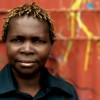
Olith Ratego
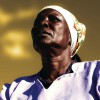
Ogoya Nengo

Sauti za Busara 2019 Call for Artist Application
The 16th Sauti za Busara, one of Africa’s top music festivals, is scheduled to take place in Stone Town, Zanzibar during 7 – 10 February 2019.
Sauti za Busara showcases diverse, original and live music from across the African Continent and diaspora. Artists representing music from the Arab World and Indian Ocean are also welcomed to apply
The Call for Artists is open only until 31st July 2018. Follow the link below for application details:
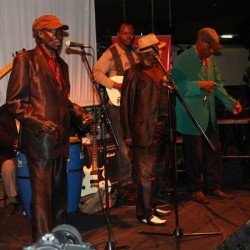
Shades of Benga: The Story of Popular Music in Kenya
We recently released our long-awaited publication, Shades of Benga: The Story of Popular Music in Kenya 1946 -2016. The 652-page book was launched at an event preceded by a photo exhibition, of pictures extracted from the book, at the Alliance Française de Nairobi on 12 July 2017.
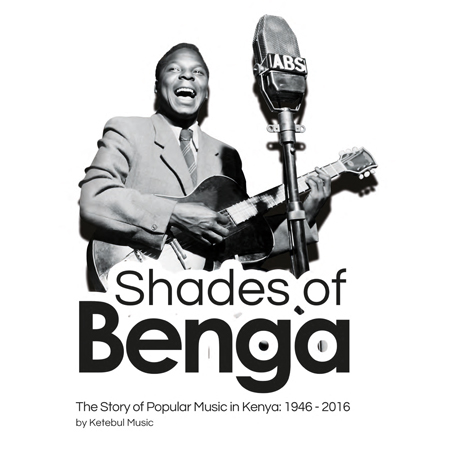
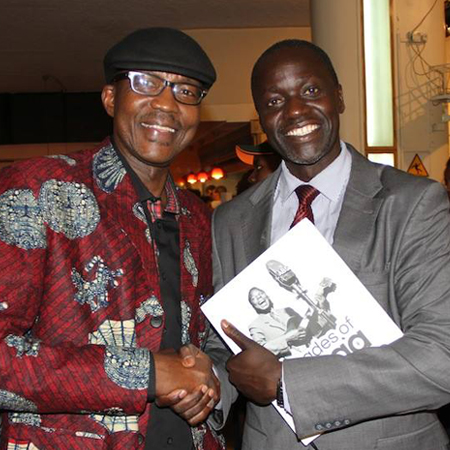
Tabu Osusa and Ford Foundation East Africa Office Representative Maurice Makoloo
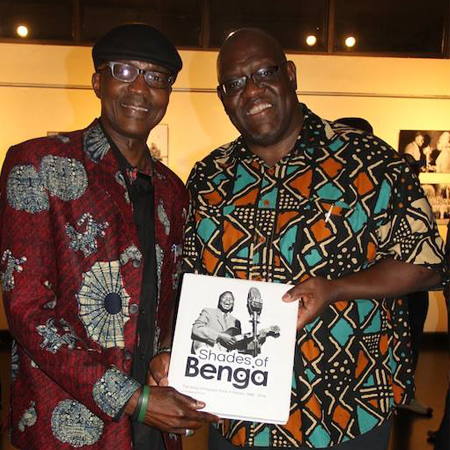
Tabu Osusa and John Githongo
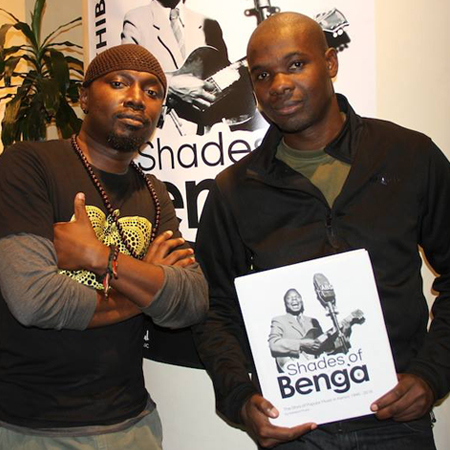
Stefano Sita Nne of Ketebul Music and Dave Omari of Eklektiks
This was followed by a presentation by the books principal authors, Ketebul Music Founding Director Tabu Osusa and Bill Odidi. They discussed the concept behind the book and gave an overview on topics covered in the 14 chapter publication.
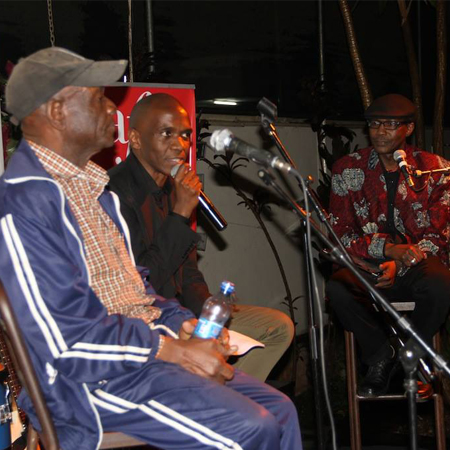
Peter Akwabi, Bill Odidi and Tabu Osusa
The launch culminated with performances by some of the pioneering musicians whose profiles can be found in the book: John Nzenze & Peter Akwabi, and Ochestre Les Mangelepa.
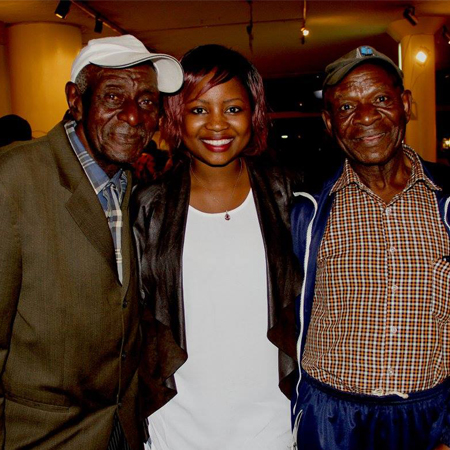
John Nzenze, Lucy Ilado and Peter Akwabi
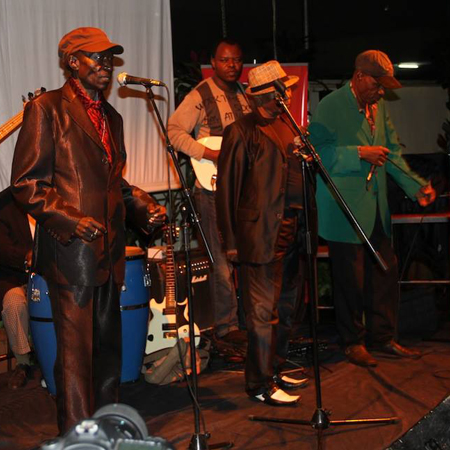
Orchestre Les Mangelepa
Shades of Benga: The Story of Popular Music in Kenya delves into the foundations of modern Kenyan music, examining external influences from the English waltz to Afro Cuban Rumba and how they helped mould new music styles across Africa. Rumba was brought to Eastern Africa via the itinerant Congolese musicians Edouard Masengo and Jean Bosco Mwenda who’s intricate guitar-picking styles largely shaped the present Kenyan sound, with the Benga playing a dominant role.
Currently, you can get advance copies from Ketebul Music Studios or place your order.
#shadesofbenga
#legendarykenyans
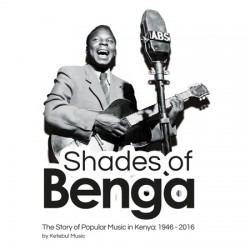
THE CALL FOR APPLICATIONS FOR VISA FOR MUSIC 2017 IS NOW OPEN!
The call for applications for the 4th edition of Visa For Music is now open! This year, the professional music market for African and Middle-Eastern music will be held 22-25 November 2017 in Rabat, Morocco.
Artists and bands have the possibility to apply to have the chance of being selected and perform in front of thousands of music professionals who come to the Kingdom’s capital to discover the talents of our territories. Everyone can apply including those who applied for previous editions and were not selected. The call for applications for the showcase program is open until April 15, 2017.
After the call for application has closed, 30 artists or bands will be selected by a qualified jury of music industry professionals who represent different musical aesthetics and the concerned regions (West Africa, East Africa, Portuguese-speaking Africa, North Africa, Middle East). To ensure diversity in the selection of the artists programmed for Visa For Music, jurors come from diverse horizons.
Information available at www.visaformusic.com

Leo Mkanyia Records At Ketebul Music
In the month of May 2015 during his East African tour, I was lucky to catch Dar es Salam’s Leo Makinya in between sessions for a new song off his yet to be titled album he was recording at Ketebul Music Studios and the busy artist was able to grant me an interview. The self-professed Swahili Blues singer spoke to me more about the sounds that shape his music and the album he is working on.
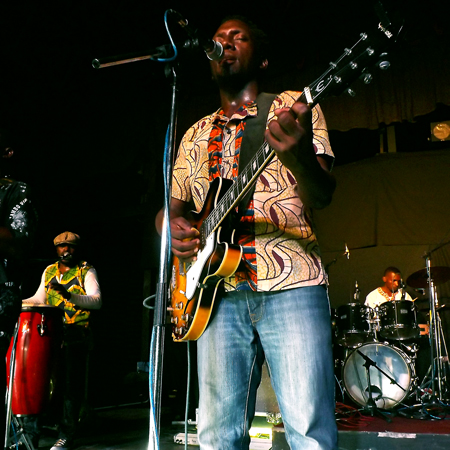
Leo Mkanyia performing at the Godown Gig
At what point in your life were you sure that you wanted to do music as a career?
I was playing with a guitar like a toy when I was a child, watching as my father and his friends played and I grew up thinking every human being could play the guitar. As I got older, I realized this was not the case when I asked some friends if they could play the guitar and they responded no. It’s easy, I said. Yet not everyone could play. I would later take the art professionally.
Why do you call your music Swahili blues?
I call it Swahili blues because it’s a mixture of Swahili songs with blues elements. I came up with this genre after I found out the music from Tanzania is purely typically blues but no one calls it that. The way we sing and the way we play our local instruments sound very much like blues so I decided to name it that as I compose my music in Kiswahili language and adopt the styles and rhythms from my tribe back home in Tanzania and use them on guitar chords. This is how my music sounds the way it sounds: jazzy and bluesy.
Why did you choose to work with Ketebul Music over any other label? How did the whole Ketebul Music collaboration come about? How did you meet each other?
Well Ketebul understands my music deeply and what I’m doing (laughs). When I met them they understood me well and gave me this opportunity to produce and record my CD here. So I thought, that’s a beautiful opportunity! Let me use it since I don’t get to record much back home in Dar es Saalam.
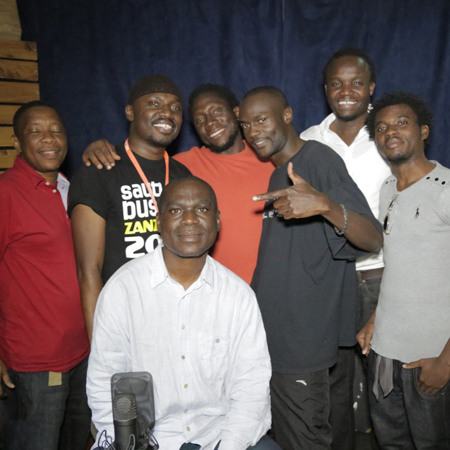
Standing L-R: Jeff Tibenda, Stefano Sita Nne, Leo Mkanyia, Drix Muyeshi, Winyo & Swahili Ally. Seated: Sadi Kinyunda
I first came to Nairobi in December of 2014 and I visited Ketebul Music with my music on a flash disk. I met the director of Ketebul Music, Mr. Tabu Osusa and introduced myself to him. I asked him if he’d listen to my music, which he did, and he liked it and he said: ‘’the music is good’’. We did interviews around and we did one recording at Ketebul Music. I then left and returned home to Dar es Salaam. I later got booked for Sauti Za Busara in Zanzibar and some events in Nairobi and also in Ethiopia. After all these concerts I got the opportunity to record here (Ketebul Music Studios) so that’s what happened.
What are your expectations for this album?
This album from my point of view is going to introduce Swahili Blues to the world.
Taking into consideration that you’re recording this album in Nairobi and not in Dar es Salaam, do you think the influences on your sound may affect your fans back home?
There are many influences; Kenyan, Ethiopian, Tanzanian, my mum’s tribe and my dad’s tribe. So it’s like a mixture of all these because that’s the life that I’m living. This CD is a representation of my life. In some songs I’m talking about Ethiopia and I even add some Ahmaric just to spice it up and make it more interesting and not rigid. The influences are definitely there in a very positive way.
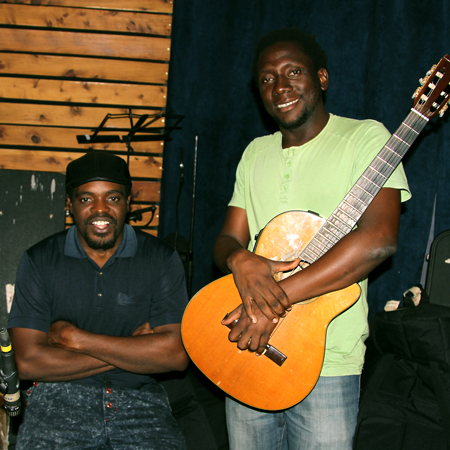
Leo Mkanyia with his long time friend and music collaborator, Juma in Ketebul Music studio A
You mentioned Addis and other East African cities in your songs, what inspires you to write these songs?
Mainly it’s due to the short periods I’ve been living in these big cities in East Africa. I had such a great time in Addis Ababa with some artists from there, despite the fact that I didn’t speak the language. That was my first time there: I picked up on some terminology and even had a few lessons in Ahmaric and tried introducing such words in the songs. I did the same in Nairobi. So there’s a love song where I sing: “I came with my lover from Zanzibar.”
And you left her for another woman in Nairobi?
No no no (chuckles). My lover from Zanzibar got lost in Nairobi. The wakora took her away. She got lost on Ngara Road. The wakora took her away to Dandorah. I use the word salaam which stands for ‘peace.’ Dar es Salaam Mombassa salaam, Nairobi salaam, so I’m trying to promote my cities and invite people to visit these places because you never know where these songs will be played and may attract someone to visit.
What are some of the topics you touch on with your songs?
The songs touch on every aspect of society. I have a song about Africa and bad leadership; there are songs about unity and promoting the youth to be together, repatriation to build nations back home in Africa; in some songs I’m talking about female genital mutilation and so on, so it’s filled with matters that affect the society and love is one of them.
My View
Leo Makinya is a very down to earth person and well grounded in the roots of his homeland and his traditional vibes. I had the privilege of listening to some of the songs he’s recording at Ketebul Music, and I would describe his sound as African pop meets traditional Tanzanian rhythms such as Segere. This storyteller weaves his stories poetically, expressing his ‘blues’ for the ills in our society. For example, in one song he dwells on the tumult of Africa and his love for the environment. The anti poaching song describing the plight of elephants in eastern Africa where they are hunted for commercial use of ivory.
The songs are recorded with live instrumentation played by some of the top session musicians in Nairobi. Leo employs a call and response style of singing on some of the songs, which is typical in most African traditional styles. His voice is very smooth and is complemented well by the musical arrangements, which sound, funky, mellow with very rhythmic grooves yet still very danceable.
Leo has good chemistry with the people involved in the project and is doing a lot of experimentation and collaborations on this album. He has featured artistes from the Ketebul Music stable like Makadem, Winyo, Akuku Danger and has also recorded a duet with Nyota Ndogo.
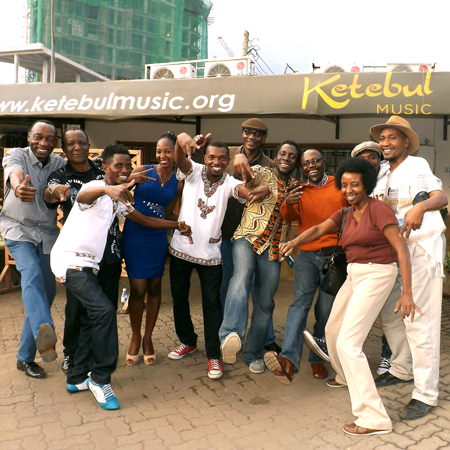
Leo Mkanyia & friends outside Ketebul Music studios
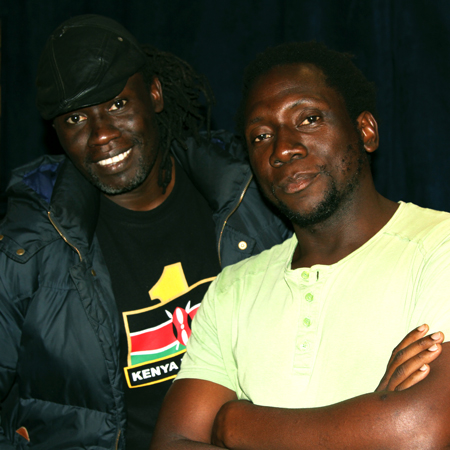
Makadem & Leo Mkanyia after their recording session at Ketebul Music
This album promises to be a must have collection, and I’ll urge you to be on the look out for it!
Written by
Delasi Nunana
For Ketebul Music
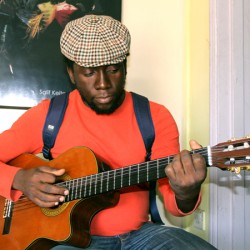
The Retracing Series on KBC Tv: Kikuyu Popular Music
Over the past 3 weeks Ketebul Music in conjunction with KBC TV have been airing our Retracing series of documentaries. These are aired as a 13 part series every Sunday at 5:30pm on KBC channel one.
The Retracing Series is based on research documentaries on the origins and development of different genres and styles of music from Kenya. So far we have documented;
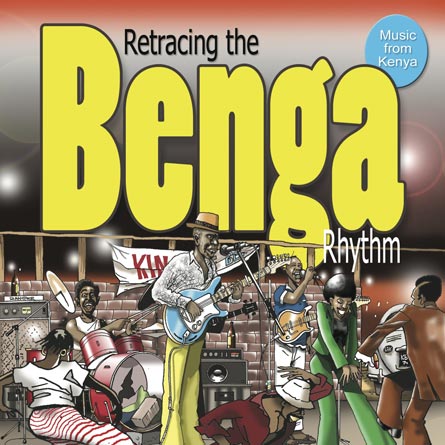
Benga: Retracing The Benga Rhythm, (which was aired over the first 3 weeks)
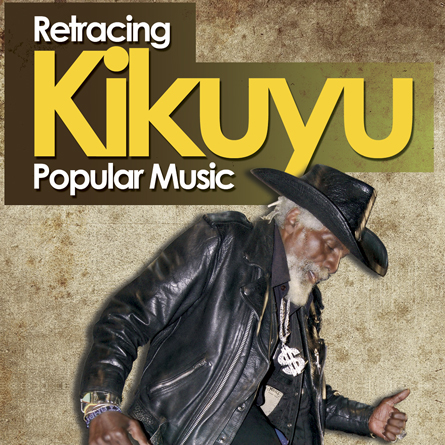
Kikuyu Popular Music: Retracing Kikuyu Popular Music
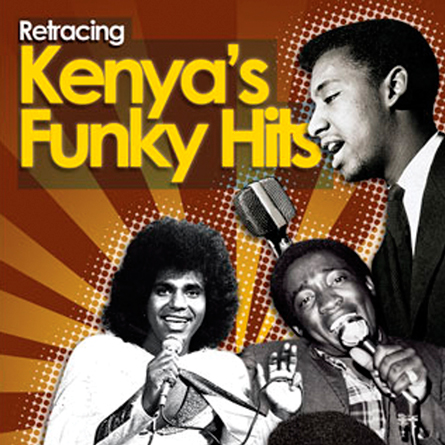
Funk: Retracing Kenya’s Funky Hits
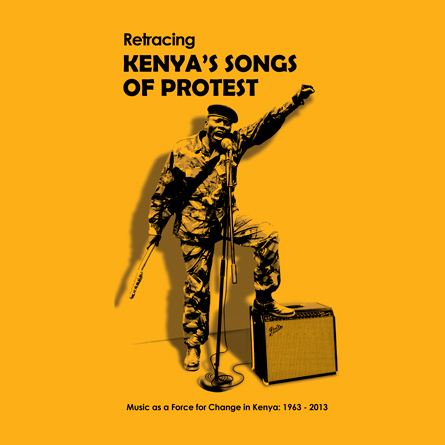
Protest music: Retracing Kenya’s Songs of Protest
This coming Sunday, we shift focus from “Retracing the Benga Rhythm,” to “Retracing Kikuyu Popular Music.”
Stay tuned on Ketebul Music website and social media for updates and extracts from the Kikuyu popular music edition, and be sure to join us this Sunday at 5:30pm on KBC Channel One for the first installment of this edition.
All the editions of the Retracing Series of documentaries are available at Ketebul Music Studios and selected outlets. For inquiries and delivery within CBD call +254 720 561 198
info@ketebulmusic.org
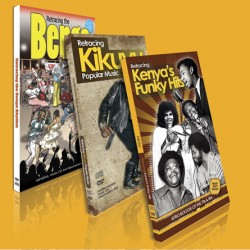
Ochieng’ Nelly: The Passing of A Legend
We at Ketebul Music, on behalf of the Kenyan music fraternity and all lovers of benga music regret to announce the sudden passing of veteran musician Ochieng’ Nelly Orwa.
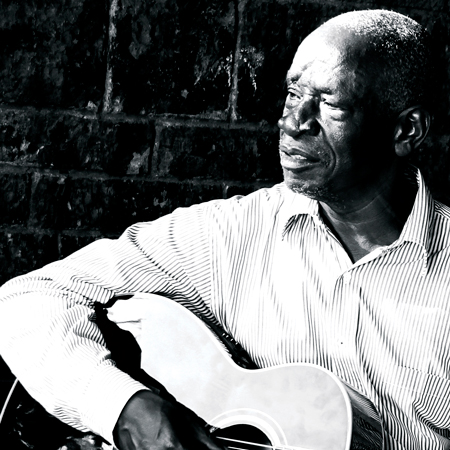
Ochieng' Nelly's career span over 5 decades
Ochieng’ died on Wednesday 30th April at Kenyatta National Hospital where he had been rushed by family and friends.
Ochieng’ was one of the two surviving members of the original Ogara Boys Band of the 60s which was led by John Ogara Kaisa. This trio, which also included Akech Oyosi Jabuya, are credited as being the pioneers of the old school benga sound.
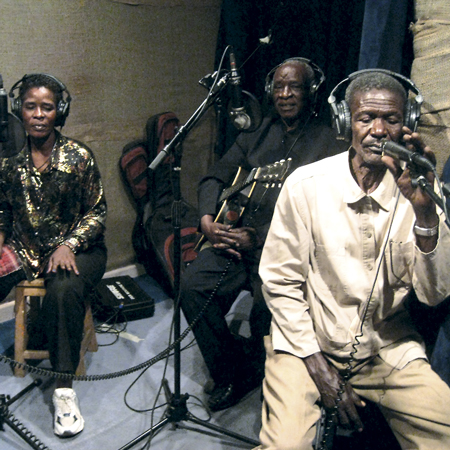
Ochieng' Nelly (center) during a recording session at Ketebul Music Studios with his band mate from the Ogara Boys Band: Akech Oyosi (far right) and his late wife Rosemary Andego (far left). Photo: No Nation
His passing is especially regrettable coming at this time when we were in the middle of preparations for the upcoming Smithsonian Folklife Festival to be held in Washington DC in June, where Ochieng’ was scheduled to perform.
Ochieng’ Nelly was not just a veteran but an important influence to the younger crop of musicians who wanted to master the art of playing benga music. Shiphton Winyo, Akuku Danger and Eddie Grey are some of the younger generation of musicians who have benefited from Ochieng’s influence and mentor ship.
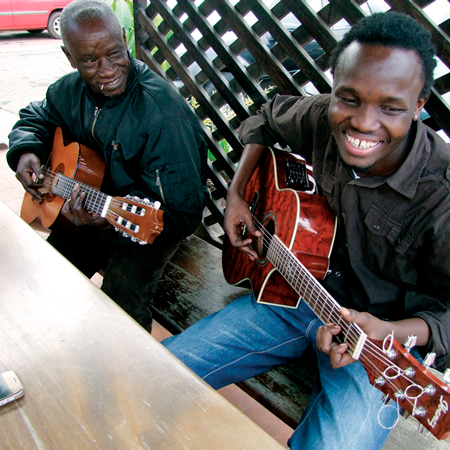
Ochieng' Nelly sharing a few benga guitar tips with Winyo. Photo: Steve 64
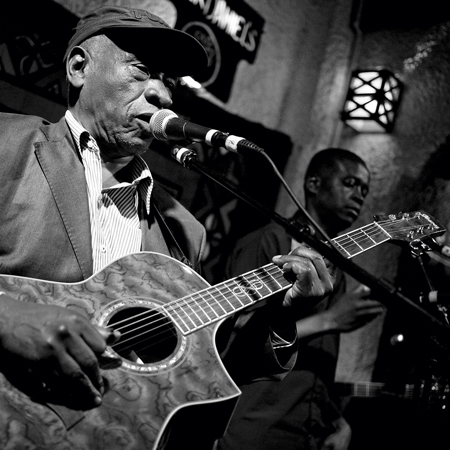
Ochieng' Nelly and his young protege Jared Akuku Danger during a recent performance. Photo: Quaint Photography
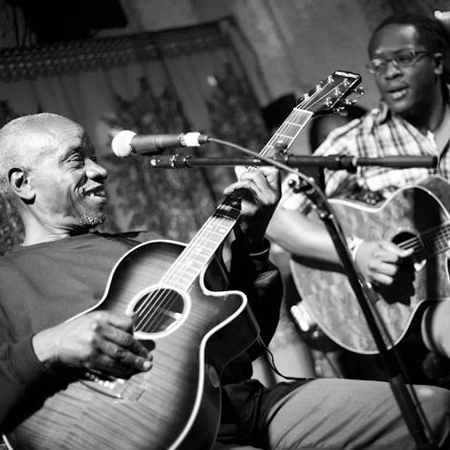
Ochieng' Nelly & Eddie Grey at a performance. Photo: Quaint Photography
One of his recent projects was a collaboration with the rap duo of MC Matre from the US and Paleface from Finland on a studio recording which they were set to release. The joke at the studio was that he should start donning bling bling and practicing walking with a rapper’s swagger. We obviously didn’t know he wouldn’t live to see the project come to fruition.
After a chequered musical career that span five decades, Ochieng’ was making a successful comeback to the live music scene and festival circuit. He had secured 14 confirmed bookings to tour Germany, Holland, Belgium and France in 2015, a tour that now has to be cancelled. The French tour follows a series of recordings he did with Radio France International last year. Ochieng’ had also been booked to perform at the closing of the DOADOA music market which will be taking place in Jinja Uganda in May 2014.
He was also keen on re-recording and introducing to the younger generation popular old music from the 1950s by such greats like Olima Anditi and Lango Obiero.
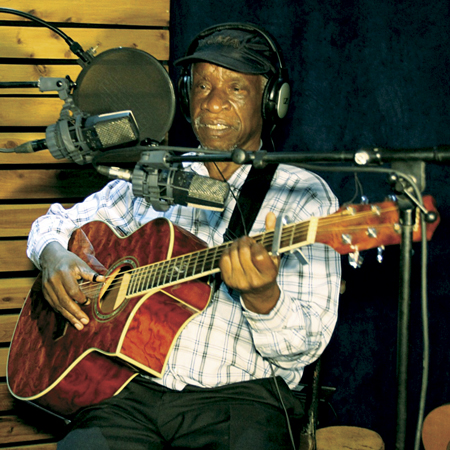
Ochieng' Nelly during a Singing Wells Recording @ Ketebul Music Studios. Photo: Singing Wells
The passing of Ochieng’ Nelly should remind us of the importance of researching and documenting Kenya’s rich and diverse cultural history in order to assist the youth in developing a sound that truly reflects and captures Kenya’s identity.
Our condolences go to the members of his family.
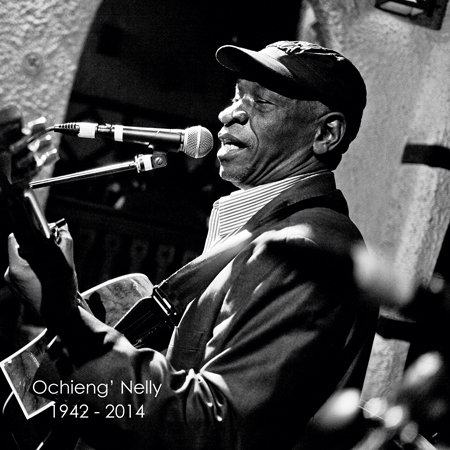
Photo: Quaint Photography
